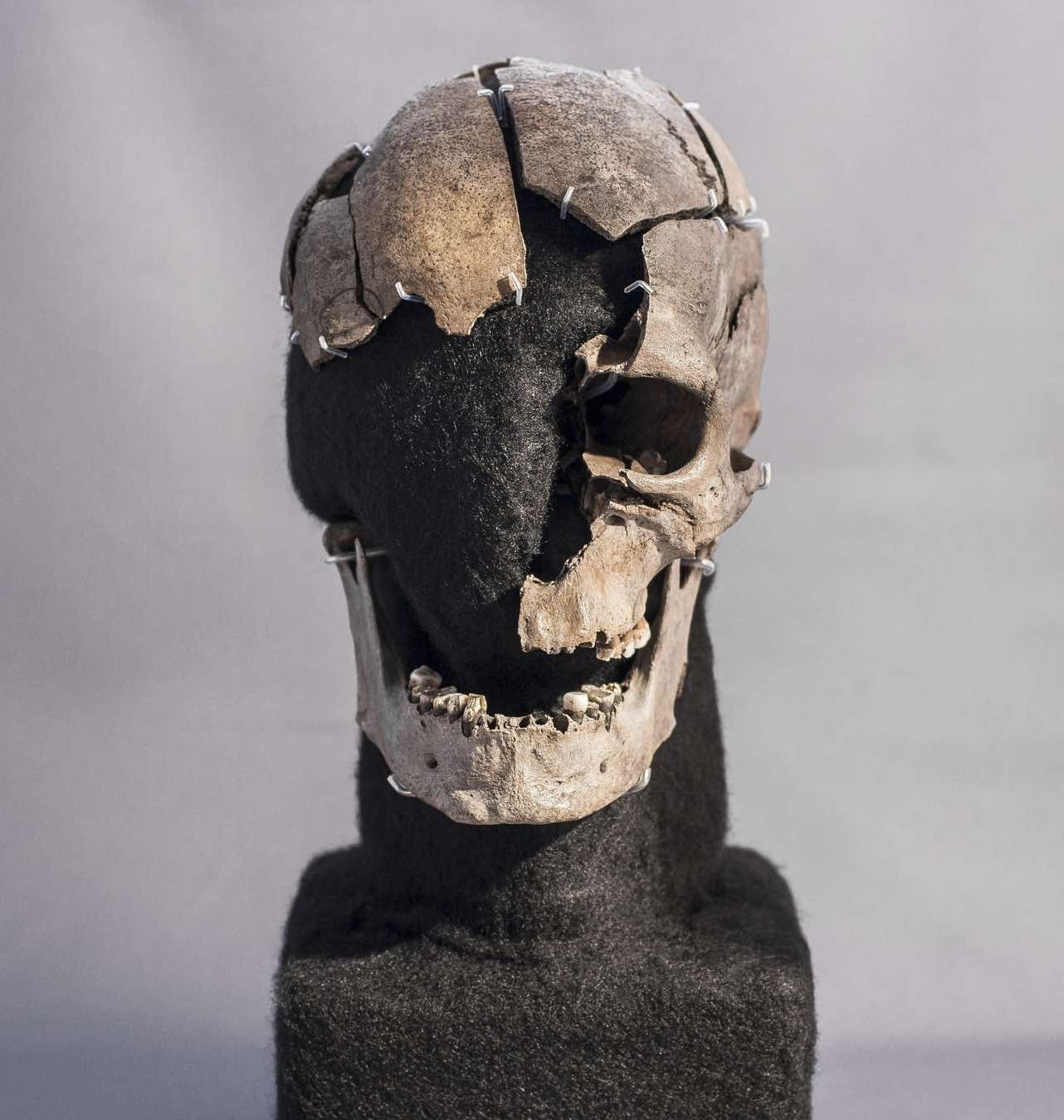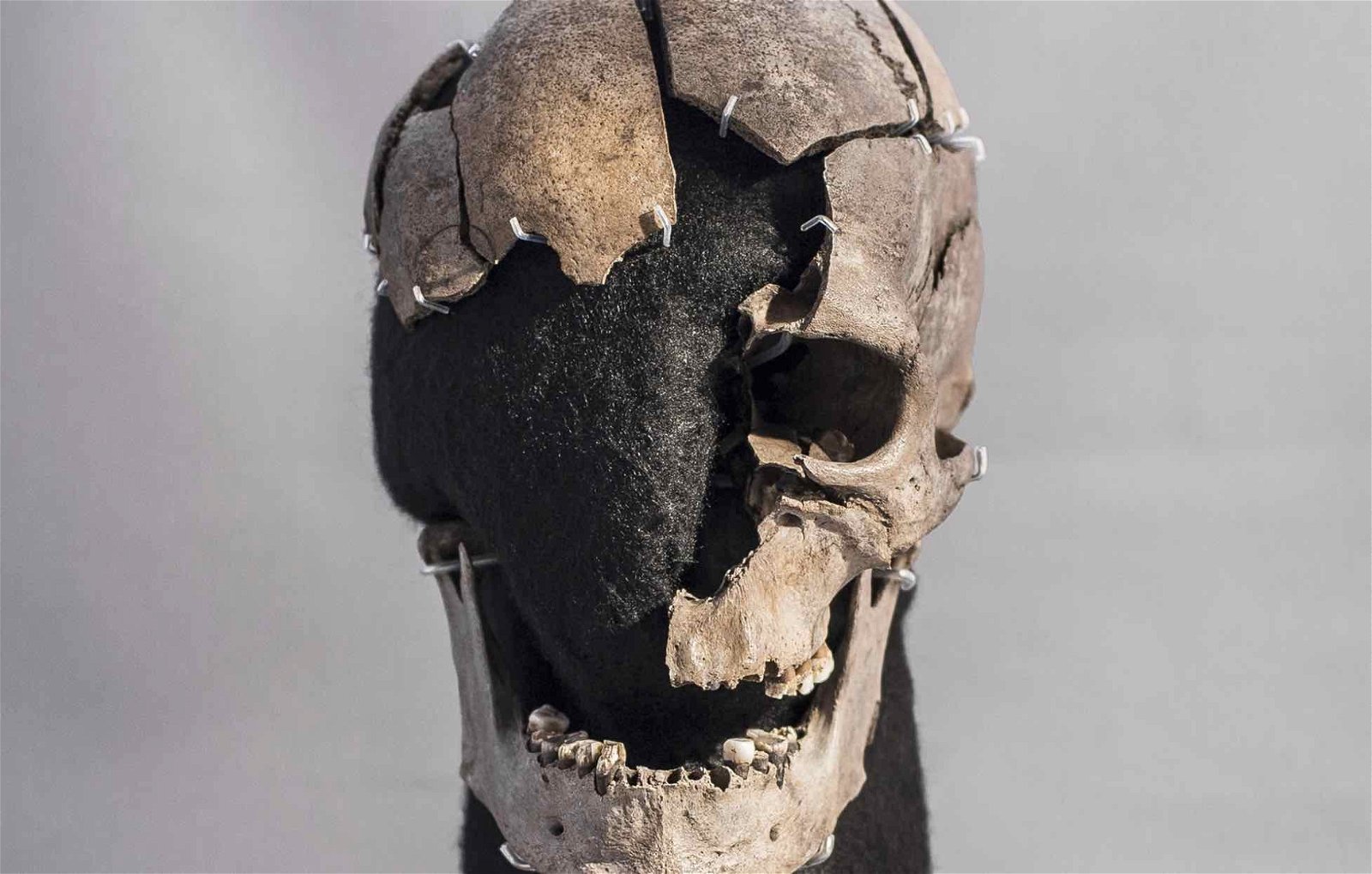Nearly 5000 years ago, a Scandinavian man who found his way to modern-day Denmark ended up becoming the offering of an ancient ritual sacrifice, after which his battered remains were left in a peat bog.
This is the story archaeologists have managed to piece together from the skeleton of Vittrup Man, a Neolithic period traveler whose shattered skull and other bones were recovered from a bog in Northwest Denmark more than a century ago. Alongside the man’s skeleton, a wooden club was found, as well as a ceramic container and a few cow’s bones.
Now, a new study into the enigmatic Vittrup Man has revealed new clues about his origins, as well as the harsh way of life that led to his death millennia ago.
Initial genomic studies that began in 2014 revealed that Vittrup Man possessed a very different genetic profile from the indigenous inhabitants where his remains were found. This prompted Anders Fischer of the University of Gothenburg, Sweden, to lead the recent study along with several colleagues.
Combining available evidence with the existing genomic data, Fischer and his team were able to reconstruct much more about the story of the mysterious Vittrup man.


“We report the combined results of an integrated set of genetic, isotopic, physical anthropological and archaeological analytical approaches,” Anders and his colleagues write in a new paper that appeared in the journal PLoS One.
“Strontium signature suggests a foreign birthplace that could be in Norway or Sweden,” they conclude, adding that enamel oxygen isotope values derived from Vittrup Man’s teeth “indicate that as a child he lived in a colder climate, i.e., to the north of the regions inhabited by farmers.”
Vittrup man’s genomic profile determined to be an excellent match to Mesolithic people from Scandinavia, and analysis of the man’s bone collagen was consistent with a diet of seal and fish early in life, suggesting he spent his early years living in coastal regions, before subsisting off produce from farming later in life.
“From a dietary isotopic transect of one of his teeth it is shown that his transfer between societies of foragers and farmers took place near to the end of his teenage years,” the researchers report in their study.
Naturally, only so much can be determined about the man’s ancient way of life from the analysis of his remains, and it is unclear what would have prompted him to move from the Scandinavian peninsula to Denmark. One possibility may be that he had been a trader or possibly even a captive who was moved to his new home and later integrated into the society of his captors.
“To our knowledge, this is the first time that research has been able to map a north European inhabitant’s life history in such a high degree of detail and in such high distance of time,” the study’s authors state.
Although many mysteries remain about Vittrup Man, there is one thing that Fischer and his colleagues feel certain about, based on the condition of the Neolithic European’s remains.
“The circumstances of Vittrup Man’s death appear easily explained,” the authors write in their study. “At that time, it was common practice in present-day Denmark to sacrifice humans in bogs, and these acts were often conducted in violent ways.”
“Evidently, such dubious honour was also given to persons of non-local provenience,” they conclude.
Fischer and his team’s study, “Vittrup Man–The life-history of a genetic foreigner in Neolithic Denmark,” was published in the journal PLoS One on February 14, 2024.
Micah Hanks is the Editor-in-Chief and Co-Founder of The Debrief. He can be reached by email at micah@thedebrief.org. Follow his work at micahhanks.com and on X: @MicahHanks.

